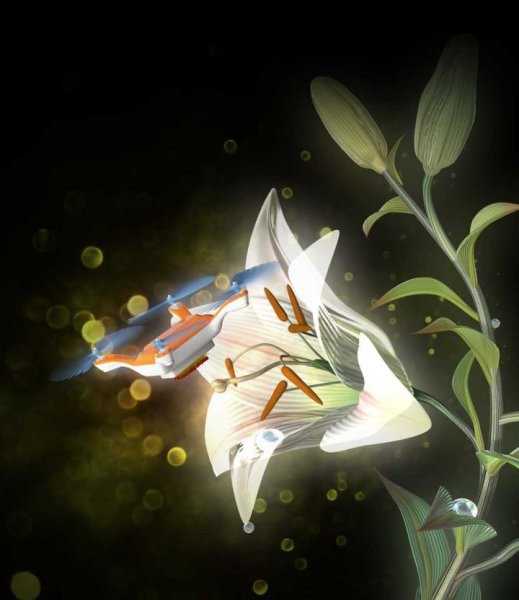rawpra
Well-Known Member
- 2 741
- 5 410
http://www.dailymail.co.uk/sciencetech/article-4160106/The-GM-cyborg-dragonflies-spy-you.html
The genetically-modified CYBORG dragonflies that can be remotely controlled to spy on people
A genetically modified cyborg dragonfly that can spy on anyone has been unveiled.
Dubbed the DragonflEye, the half-insect, half-machine is fitted with a fingernail-sized backpack, powered by a solar panel and remotely controlled by an operator.
The dragonfly can be used for 'guided pollination' as well as surveillance missions, according to researchers.
The insect could even carry payloads, according to Jesse Wheeler, a senior biomedical engineer at Draper Labs which collaborated with the Howard Hughes Medical Institute to carry out the DragonflEye program.
The expert told Spectrum iEEE: 'Beyond tracking, the DragonflEye system offers new miniaturized technology to equip a wide range of insects with environmental sensors and potentially guide important behaviors, like pollination.'
To carry out the research, engineers had to develop a way of genetically modifying the nervous system of the dragonfly so it can respond to pulses of light.
To do this, the team gave the insect a gene which added light-sensitive proteins called ospins to the neurons.
This then allowed the neurons to be activated by the light – sent by an interface in the 'backpack' called an optrode.
The neurons then kicked into its usual routine of sending signals to the wings to encourage the insect to fly.
Mr Wheeler said: 'In order to begin guidance of dragonflies, several key technologies needed to be developed.
'Howard Hughes Medical Institute focused on developing gene delivery methods specific to the dragonfly to make special 'steering' neurons sensitive to light.
Draper developed a miniaturized backpack for autonomous navigation and a flexible optrode to control the modified neurons by guiding light around the dragonfly's tiny nerve cord.
'Our first-generation system is based upon early mockup backpacks that were fitted to dragonflies to test ergonomics and weight limits.
'With these new technologies in hand, we will be equipping dragonflies with the backpack system and begin investigating position tracking, flight control, and optimized optical stimulation.'

The genetically-modified CYBORG dragonflies that can be remotely controlled to spy on people
A genetically modified cyborg dragonfly that can spy on anyone has been unveiled.
Dubbed the DragonflEye, the half-insect, half-machine is fitted with a fingernail-sized backpack, powered by a solar panel and remotely controlled by an operator.
The dragonfly can be used for 'guided pollination' as well as surveillance missions, according to researchers.
The insect could even carry payloads, according to Jesse Wheeler, a senior biomedical engineer at Draper Labs which collaborated with the Howard Hughes Medical Institute to carry out the DragonflEye program.
The expert told Spectrum iEEE: 'Beyond tracking, the DragonflEye system offers new miniaturized technology to equip a wide range of insects with environmental sensors and potentially guide important behaviors, like pollination.'
To carry out the research, engineers had to develop a way of genetically modifying the nervous system of the dragonfly so it can respond to pulses of light.
To do this, the team gave the insect a gene which added light-sensitive proteins called ospins to the neurons.
This then allowed the neurons to be activated by the light – sent by an interface in the 'backpack' called an optrode.
The neurons then kicked into its usual routine of sending signals to the wings to encourage the insect to fly.
Mr Wheeler said: 'In order to begin guidance of dragonflies, several key technologies needed to be developed.
'Howard Hughes Medical Institute focused on developing gene delivery methods specific to the dragonfly to make special 'steering' neurons sensitive to light.
Draper developed a miniaturized backpack for autonomous navigation and a flexible optrode to control the modified neurons by guiding light around the dragonfly's tiny nerve cord.
'Our first-generation system is based upon early mockup backpacks that were fitted to dragonflies to test ergonomics and weight limits.
'With these new technologies in hand, we will be equipping dragonflies with the backpack system and begin investigating position tracking, flight control, and optimized optical stimulation.'
















